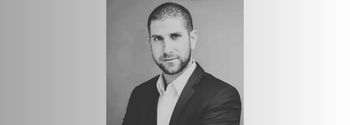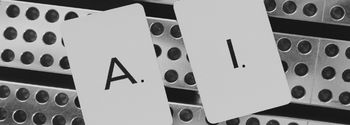Blog
CEO Stories

The emergency whisperer
In a city like New York, where the wail of sirens weaves into the urban hum alongside taxi horns and street chatter, the emergency response machinery feels

AI meets blockchain: A VC’s plan to redefine tech
Anthony Georgiades, general partner at Innovating Capital, navigates the world of venture capital with the intensity of someone peering into the future, tr

The startup rewriting adulthood
Genevieve Bellaire, the founder and CEO of Realworld, has a knack for spotting gaps that others overlook. At thirty-five, she’s built a mobile app and plat
Leadership

Bedtime stories can’t buy G-Wagons
Some lunch meetings have more impact than others. Ron and Jacob’s once-a-quarter bread-breaking, something they’d held sacred since they met almost four ye

Free people form community
True community emerges when free individuals come together as equals, unburdened by hierarchy or dependency. Yet this ideal is fragile and often undone by

Roosevelt’s Arena: Today’s CEOs face dust, sweat, and torched Teslas
In the spring of 2021, the co-founders of Basecamp, a software company known for its project management tools, decided that political discussions had no pl
Artificial Intelligence

The hidden physics that sparked an AI revolution
In the mid-20th century, physicists exploring the enigmatic behaviors of spin glasses — metallic alloys with disordered magnetic orientations — could scarc

How AI and agility are redrawing the future of finance
Kamran Ansari, a seasoned venture capitalist and operator, has navigated the intricate corridors of Silicon Valley and New York’s tech ecosystems for nearl
Economics

Solar power lights up Trump country
In the rolling hills of northwest Georgia, where the Chattahoochee River carves lazy curves through red clay, the town of Dalton — once known for its carpe

Why your dream job might not exist
In the spring of 2025, the American job market stands at a curious crossroads. Official statistics paint a picture of economic vigor, with low unemployment

Grading Trump's first 100 days
The promise of Trump’s second term was rooted in a familiar refrain: “Make America Great Again,” now with an economic twist — “Make America Affordable Agai
News

Why your dream job might not exist
In the spring of 2025, the American job market stands at a curious crossroads. Official statistics paint a picture of economic vigor, with low unemployment

Grading Trump's first 100 days
The promise of Trump’s second term was rooted in a familiar refrain: “Make America Great Again,” now with an economic twist — “Make America Affordable Agai

Should the government breakup Google?
The Department of Justice (DOJ), emboldened by a 2024 ruling that Google illegally monopolized online search, is pushing for remedies that could reshape th
Energy
Health

The Efficacy of GLP-1 Drugs
A quiet revolution is reshaping the contours of American medicine, and it comes in the form of a weekly injection. GLP-1 receptor agonists — drugs like Oze

Networking your way to loneliness
During lunch one day, Ron tried to convince Jacob to skip his child’s choir concert in favor of attending a “fireside chat,” a gathering that would surely
Mind Games: Big Pharma’s billion-dollar return to mental health
In the intricate tapestry of pharmaceutical innovation, psychiatric drug development has often been overshadowed by more concrete medical pursuits. However
Science

The Efficacy of GLP-1 Drugs
A quiet revolution is reshaping the contours of American medicine, and it comes in the form of a weekly injection. GLP-1 receptor agonists — drugs like Oze

The hidden physics that sparked an AI revolution
In the mid-20th century, physicists exploring the enigmatic behaviors of spin glasses — metallic alloys with disordered magnetic orientations — could scarc

The battle for trust in science
The demand for transparency in research — once a quiet murmur among ethicists and a handful of persistent journalists — has grown into a resounding chorus,
All Posts

Solar power lights up Trump country
In the rolling hills of northwest Georgia, where the Chattahoochee River carves lazy curves through red clay, the town of Dalton — once known for its carpet mills — has discovered a new purpose. Qcells, a South Korean solar manufacturer with a distinctly American ambition, has invested $2.5 billion into factories here and in nearby Cartersville, producing solar panels and cells to power homes and businesses across the nation. Just down the road, in Norcross, Suniva has restarted production at its plant, while SOLARCYCLE is developing a 5-gigawatt solar recycling facility in Cedartown. Georgia, a state that voted for Donald Trump in 2024, is now home to 48 solar manufacturers and an $8.4 billion solar market. This is not the sun-soaked California of stereotype, nor the progressive enclaves of the Northeast. This is Trump country, and it’s glowing with solar ambition.A decade ago, California accounted for nearly half of America’s solar energy capacity, with its sunny hillsides and liberal policies making it the poster child for renewable energy. However, the solar landscape has shifted dramatically, driven more by economics than by ideology. According to the Solar Energy Industries Association (SEIA), 80% of solar manufacturing investments since August 2022 have flowed into congressional districts represented by Republicans, and 14 of the 20 states that installed the most solar capacity in 2024 backed Trump in the last election. States like Texas, Ohio, and Georgia — strongholds of conservative politics — are now leading a renewable energy boom that is reshaping their economies and challenging assumptions about where clean energy thrives.The numbers tell a compelling story. Solar and energy storage accounted for 84% of new grid capacity in 2024, demonstrating the technology’s affordability and scalability. In Arkansas, another Trump stronghold, solar capacity more than doubled last year, with $3.6 billion invested in the state’s economy. A massive solar farm under construction in Mississippi County will soon power 50,000 homes while creating 400 construction jobs and generating $1.3 million in annual tax revenue. In Texas, utility-scale solar, wind, and battery storage projects are projected to contribute over $20 billion in tax revenue and pay landowners $29.5 billion over their lifetimes. These aren’t just abstract figures — they translate into jobs for electricians, welders, and factory workers, many of whom proudly wear MAGA hats to work.What’s driving this surge? The answer lies in a confluence of policy, pragmatism, and market forces. The Inflation Reduction Act (IRA) of 2022, despite passing without a single Republican vote, has directed billions in tax credits and incentives to clean energy projects, many of which are situated in red states where land is inexpensive and regulations are minimal. “When conservative states cut red tape and allow solar to compete, utilities and developers choose the generation source that delivers the best product,” SEIA notes. Solar’s low cost and rapid deployment make it the preferred choice for meeting the soaring energy demands of industries such as artificial intelligence and advanced manufacturing, which require reliable and affordable power.Yet, this boom faces a shadow. The House Ways and Means Committee just passed a bill that would repeal crucial solar tax credits, including the Section 25D residential solar credit, threatening to derail nearly 300 solar and storage factories and 300,000 jobs — 80% of which are in red states. SEIA’s president, Abigail Ross Hopper, called it a “catastrophic energy shortfall” that could cede technological leadership to China. The irony is stark: a policy pushed by Republican lawmakers could undermine the very communities that propelled Trump to victory.In Dalton, the Qcells factory hums with activity. Workers in hard hats and safety vests assemble solar modules under the whir of robotic arms, their output destined for both rooftops and utility-scale projects. Many of these workers are locals who once toiled in textile mills or construction, now retrained for a high-tech industry that’s transforming their region. The economic ripple effects are undeniable. In Ohio, another Trump state, solar manufacturing has taken root alongside traditional industries like steel and automotive. First Solar, a leading U.S. manufacturer, operates a massive facility in Lake Township, employing over 1,500 workers to produce panels for both domestic and international markets. The state ranks among the top three for solar manufacturing, alongside Georgia and Texas, with 70-80% of federal clean energy investments since 2022 flowing to districts represented by Republicans.This isn’t to say the transition is seamless. In rural communities, solar farms sometimes spark tension over land use. Farmers in Arkansas have protested large-scale projects, worried about losing arable land to sprawling arrays of panels. Yet, the financial incentives, such as lease payments to landowners and tax revenue for schools and infrastructure, often prevail. In Mississippi County, the new solar farm is expected to fund local services for decades, a boon for a region long reliant on agriculture.The political paradox is hard to ignore. Trump, who has vowed to dismantle the IRA and prioritize fossil fuels, won votes in states that are currently benefiting from clean energy policies he opposes. His rhetoric on energy dominance emphasizes oil and gas, yet the growth of solar energy in red states aligns with his broader goals of job creation and energy independence. For now, the solar surge in Trump country is a story of pragmatism trumping politics. In Georgia, workers at Qcells don’t debate climate change over lunch; they talk about overtime and benefits. In Arkansas, farmers leasing land for solar farms see steady checks, not green dogma. And in Texas, where the grid famously faltered in 2021, solar’s reliability is quietly bolstering energy security. The sun, it turns out, doesn’t vote red or blue — it just shines.As Congress debates the future of clean energy incentives, the stakes are high. Repealing tax credits could stall projects and shutter factories, leaving towns like Dalton and counties like Mississippi to grapple with lost jobs and investments. But if the policies hold, these red states could cement their place as the backbone of America’s solar industry, proving that clean energy isn’t just a coastal dream — it’s a heartland reality.

The Efficacy of GLP-1 Drugs
A quiet revolution is reshaping the contours of American medicine, and it comes in the form of a weekly injection. GLP-1 receptor agonists — drugs like Ozempic, Wegovy, and Zepbound — have vaulted from diabetes management to the forefront of obesity treatment, promising to shrink waistlines and rewrite the narrative of a disease that afflicts nearly half of U.S. adults. These “wonder drugs,” as they’ve been dubbed, are not mere pharmaceuticals; they are cultural lightning rods, sparking debates about health, equity, and the very nature of human biology. Hailed as a breakthrough that could save millions from the ravages of obesity-related disease, they are also shadowed by questions of cost, dependency, and the risk of over-medicalizing a deeply social problem. The story of GLP-1 drugs is one of astonishing potential and sobering trade-offs, a mirror held up to our fractured healthcare system and our fraught relationship with our bodies.The case for GLP-1 drugs begins with their undeniable efficacy. Developed to mimic the glucagon-like peptide-1 hormone, which regulates appetite and blood sugar, these drugs slow digestion and signal satiety to the brain. The results are staggering: clinical trials have shown weight loss of up to 20 percent of body weight, dwarfing the modest outcomes of diet and exercise alone. A head-to-head trial reported in The Guardian found Zepbound outperforming Wegovy, with patients losing an average of 20 percent compared to 14 percent. Beyond aesthetics, the drugs deliver profound health benefits. A 2024 study in The New England Journal of Medicine linked semaglutide to a 44 percent reduction in heart attack and stroke risk among obese patients with cardiovascular disease. Emerging research suggests applications for everything from fatty liver disease to Alzheimer’s, with the drugs’ action on the brain’s reward system even hinting at relief for depression and addiction. As Dr. Giles Yeo, an obesity researcher at Cambridge, told The Guardian, “These drugs are changing how we think about obesity as a biological condition, not a moral failing.”The societal implications are equally tantalizing. Obesity costs the U.S. healthcare system an estimated $150 billion annually, a figure that doesn’t account for lost productivity or the human toll of shortened lifespans. A 2025 UK study cited in The Guardian projected that semaglutide could boost Britain’s economy by £4.5 billion a year through reduced sick days and increased workforce participation. In the U.S., Medicare’s decision to cover GLP-1 drugs for cardiovascular patients, announced in March 2025, reflects a growing recognition of their preventive potential. For individuals, the drugs offer a lifeline. A 52-year-old nurse in Chicago, profiled in The New York Times last month, described losing 60 pounds on Zepbound, reversing her type 2 diabetes, and reclaiming the energy to play with her grandchildren. Stories like hers underscore a truth long obscured by stigma: for many, obesity is a chronic condition, not a lack of willpower, and GLP-1 drugs provide a tool to manage it.Yet the sheen of this medical miracle fades under scrutiny. The most immediate barrier is cost. A month’s supply of Wegovy or Zepbound can exceed $1,300, and insurance coverage remains inconsistent. The Guardian recounted the plight of David Kessler, the former FDA commissioner, who paid out-of-pocket for Zepbound after his insurer balked. Kaiser Family Foundation reports that only 19 percent of commercial insurance plans fully cover GLP-1 drugs for obesity, leaving millions to navigate a patchwork of copays, prior authorizations, and denials. Public health systems face similar strains; the Congressional Budget Office warned in April 2025 that widespread Medicare coverage could balloon federal spending by $50 billion annually. For a nation already grappling with healthcare inequities, the drugs risk becoming a privilege for the affluent, deepening the divide between those who can afford to be healthy and those who cannot.Then there are the side effects, which range from the merely unpleasant to the potentially serious. Gastrointestinal issues—nausea, vomiting, diarrhea—are common, particularly among women who, curiously, also lose more weight on the drugs (50 to 90 percent more than men, per a 2025 study in JAMA). The Guardian noted that these side effects may stem from dosing regimens not tailored to gender differences, serving as a reminder of medicine’s blind spots. More troubling are rare but severe risks like pancreatitis and thyroid cancer, which have prompted warnings from the FDA. The drugs’ long-term effects remain murky; most patients have been on them for less than five years, and the data is thin. A 2025 trial found that patients who stop GLP-1 drugs regain nearly all their lost weight within a year, raising the specter of lifelong dependency. As one endocrinologist told Stat News, “We’re prescribing these drugs without knowing if they’re a bridge to health or a crutch for life.”The philosophical objections cut deeper. Critics argue that GLP-1 drugs medicalize a problem rooted in the environment and policy, diverting attention from the processed-food industry and sedentary lifestyles. Dariush Mozaffarian, a nutrition expert at Tufts, warned in a New York Times op-ed that “treating obesity with drugs is like treating a fever with Tylenol — it addresses the symptom, not the cause.” The drugs’ success could also entrench a culture of quick fixes, undermining efforts to promote sustainable habits. There’s a gendered dimension here, too: women, who face disproportionate pressure to conform to idealized body types, make up 70 percent of GLP-1 users. The drugs’ popularity among celebrities and influencers fuels fears of a new era of body dysmorphia, where even healthy-weight individuals seek injections to chase an unattainable ideal.So, where does this leave us? GLP-1 drugs are neither a panacea nor a poison; they are a tool, extraordinary but imperfect, in a world ill-equipped to wield them equitably. Their promise lies in their ability to rewrite the biology of obesity, sparing millions the diseases that shadow excess weight. Their peril lies in their cost, their unknowns, and their potential to distract from systemic fixes—a sugar tax, better food labeling, urban spaces that encourage movement. The challenge is to integrate these drugs into a broader strategy, one that pairs medical innovation with social reform.For now, the revolution is personal, not universal. The nurse in Chicago, whose life is transformed, is a testament to what’s possible. But so is the single mother in Detroit, priced out of a drug that could change her future. The GLP-1 era demands that we grapple with both — the hope and the hard truths — lest we trade one form of excess for another.

Why your dream job might not exist
In the spring of 2025, the American job market stands at a curious crossroads. Official statistics paint a picture of economic vigor, with low unemployment rates and steady job creation signaling a robust recovery from past disruptions. Yet, beneath this veneer of prosperity lies a more troubling reality: countless job seekers are mired in frustration, ensnared by a labor market that feels increasingly deceptive and inaccessible. This dissonance between macroeconomic indicators and individual experiences reveals a complex and evolving employment landscape, characterized by phenomena such as “ghost jobs,” structural shifts driven by automation, and outdated metrics that fail to accurately capture the actual state of economic well-being. To address this paradox, policymakers, employers, and workers must confront these challenges with clarity and innovation.One of the most insidious obstacles facing job seekers today is the proliferation of “ghost jobs” — job listings advertised without any real intent to hire. According to a 2023 study by Hunter Ng, a labor market analyst, up to 21% of job postings may be classified as ghost jobs, particularly in specialized industries and large corporations. These phantom postings serve various purposes: some companies maintain them to signal growth to investors, while others use them to build a pool of candidates for future needs or to appease overworked employees with the promise of forthcoming help. The consequences for job seekers are profound. Each unanswered application erodes confidence, wastes time, and distorts perceptions of market demand. As Ng notes, ghost jobs “create a false sense of opportunity, leading to burnout and disillusionment among applicants.” This phenomenon not only undermines trust in the hiring process but also muddles labor market signals, making it harder for workers to align their skills with genuine opportunities.Compounding this issue are the structural shifts reshaping the labor market. Automation and technological advancements, while driving productivity, are rapidly redefining job roles. A report from the McKinsey Global Institute projects that up to 30% of current jobs could be automated by 2030, with roles in manufacturing, retail, and administrative support facing the most significant risk. Simultaneously, demand is surging for skills in artificial intelligence, data analytics, and renewable energy — fields that require specialized training, which many workers lack. This mismatch leaves countless individuals in a state of flux, caught between obsolete roles and emerging opportunities they are not yet equipped to seize. For example, a former retail manager may find their experience irrelevant in a tech-driven economy, yet lack the resources or time to retrain in a field like cybersecurity. While automation holds long-term promise for economic growth, its immediate impact is disruption, leaving workers to navigate an uncertain transition.Further complicating the narrative is the inadequacy of traditional employment metrics. The unemployment rate, often heralded as the primary gauge of labor market health, stood at a historically low 3.8% in early 2025, according to the Bureau of Labor Statistics. Yet, this figure obscures critical nuances. Underemployment — workers in roles below their skill level or desired hours — remains a persistent issue, with the BLS’s broader U-6 measure of labor underutilization hovering at 7.2%. The rise of gig economy roles and part-time positions further distorts the picture. A 2024 study by the Economic Policy Institute found that 15% of U.S. workers rely on gig or temporary work as their primary source of income, often without benefits or job security. These realities suggest that a low unemployment rate does not necessarily equate to economic well-being, as many workers grapple with precarious or unfulfilling employment.In this complex environment, job seekers face a labor market where appearances can be deceiving. The optimism of headline statistics belies a reality of ghost jobs, skill mismatches, and precarious work arrangements. To bridge this gap, a multifaceted approach is needed. First, employers must prioritize transparency in hiring practices. Regulatory measures, such as requiring companies to disclose the status of job postings or penalizing deceptive listings, could curb the prevalence of ghost jobs. Second, investment in reskilling programs is critical to prepare workers for emerging roles. Public-private partnerships, such as those piloted in states like California and Texas, have shown promise in providing accessible training for high-demand fields. Finally, policymakers must rethink how labor market health is measured. Incorporating metrics such as underemployment, wage growth, and job quality into public discourse would provide a more comprehensive view of economic realities.The American job market in 2025 presents a paradox of promise and peril. While macroeconomic indicators suggest prosperity, job seekers' experiences reveal a landscape marked by numerous obstacles. By addressing the issues of ghost jobs, structural shifts, and inadequate metrics, stakeholders can pave the way for a labor market that aligns statistical optimism with real opportunities. Only through such efforts can the American workforce navigate this terrain of illusion and emerge into a future of genuine economic security.
Read by more than 50,000 CEOs weekly.

